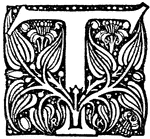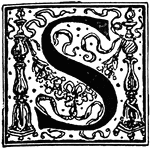
Trimming a basket
This diagram is an example of how to trim a basket after the basket has been bounded and banded. This…

Posterior View of the Cutaneous Nerves of Trunk
The distribution of cutaneous nerves n the back of the trunk. On the left side the distribution of the…

Coralberry
The Aechmea fulgens of coralberry is a bromeliad which is often used as a decorative plant.

White Bat Plant
Tacca integrifolia or White Bat Plant is a flowering plant cultivated as ornamental plants.
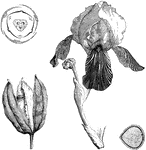
Maguey
Agave americana is also known as the Century Plant or Maguey and is used as an ornamental plant.
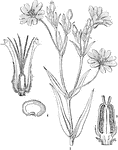
Greater Stitchwort
Stellaria holostea is an ornamental plant also known as Addersmeat or the Greater Stitchwort.

Martin Luther
Martin Luther (November 10, 1483 – February 18, 1546) was a German monk, theologian, university professor,…
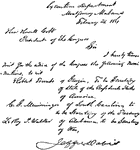
Jefferson Davis's First Message
Jefferson Davis', the President of the Confederate States of America, first message.

Archbishop Edmund Grindal
Edmund Grindal (c. 1519 – 6 July 1583) was an English church leader who successively held the…

Aphelandra
Aphelandra cristata is a flowering plant shown potted here because it is often used as a houseplant.
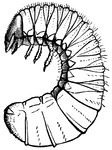
Grubworms
White grubs or Grubworms are the larvae of scarabs (beetles). Grubs commonly attack the roots of turfgrasses…
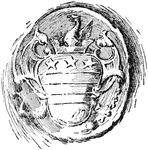
Washington's Seal (From a Letter to Bouquet, 1758)
Washington's Seal incorporates the same design which can be found in Washington's Arms. The coat of…
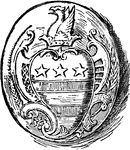
Washington's Private Seal, 1783
Washington's Private Seal incorporates the same design which can be found in Washington's Arms. The…

Fire Screen
This image shows a fire screen decorated with a tapestry. Fire screens are used to reduce excessive…
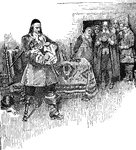
Governor Peter Stuyvesant
Governor Stuyvesant tearing up the letter demanding the surrender of New Amsterdam.

Leaf Finial
The finial is an architectural device, typically carved in stone and employed to decoratively emphasize…

Finials
The finial is an architectural device, typically carved in stone and employed to decoratively emphasize…

Carp
Carp is a common name for various freshwater fish of the family Cyprinidae, a very large group of fish…

Roman Arcade with Engaged Columns
An arcade is a passage or walkway covered over by a succession of arches or vaults supported by columns.…

Jasminum grandiflorum
Jasminum grandiflorum (chameli in Hindi) is a species of jasmine native to South Asia. In India, its…
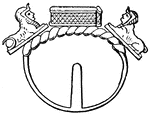
Egyptian Diadem
An illustration of an Egyptian diadem. A diadem is a type of crown, specifically an ornamental headband.
Gold Diadem
An illustration of a small gold diadem. A diadem is a type of crown, specifically an ornamental headband…

Gold Crown
An illustration of a gold crown created by "pure hammered gold cut into thin plates, attached to rings…

Openwork Gable, From Front of Rouen Cathedral
A gable is the generally triangular portion of a wall between the edges of a sloping roof. A wimperg…

Foxglove
An illustration of: 1, Coralla cut open showing the four stamens; 2, Unripe fruit (lengthwise); 3, ripe…
Architrave of Entablature over Doorway at the Great Temple at Philæ
An entablature refers to the superstructure of moldings and bands which lie horizontally above columns,…
Sculptured Ornamental Border from the Ruins of Nineveh
Over the Winged Bulls were painted other acts of the king surrounded by his eunuchs and warriors, and…

Pillar Fragment from the Treasury of Atreus
Peculiar vaulted buildings often existed in connection with the palaces for the preservation of valuables;…

Egg-and-Dart
Egg-and-dart is an ornamental device often carved in wood, stone, or plaster quarter-round ovolo mouldings,…

Bryony and Hops
The Bryony and Hops have picturesque qualities that well adapted for ornamental use.
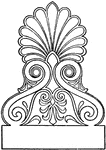
Greek Akroter
The Greek akroter serves as an ornamental finish to the apex of a gable. It is painted in the temple…
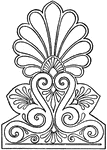
Greek Akroter
This Greek akroter is painted in Acropolis, Athens. It serves as the ornamental finish to the apex of…
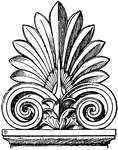
Greek Sepulchral Stele-Crest
The Greek Sepulchral stele-crest is a form of an akroter. This design is an ornamental finish to the…
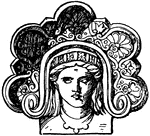
Graeco-Italic Akroter
This Graeco-Italic akroter is made out of terracotta. This design is an ornamental finish to the apex…

Corner Akroter
This shows the front view of the corner akroter. This design is an ornamental finish to the apex of…
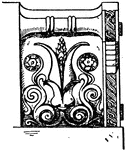
Corner Akroter
This shows the side view of the corner akroter. This design is an ornamental finish to the apex of a…

Modern French Akroter
This modern French akroter was designed by Architect Renaud. It serves as an ornamental finish to the…
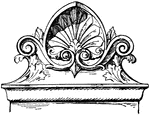
Modern French Akroter
This modern French akroter was designed by Architect Renaud. This design is located in the Orleans railway…

Akroter
This akroter is found on a fountain in the Certosa near Florence. Designed during the Italian Renaissance,…
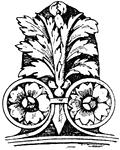
Corner Akroter
This corner akroter is found on a fountain in the Certosa near Florence. Designed during the Italian…

Finial Modern French Vase
This finial modern vase is found in the ministry of war in Paris, France. It is typically used on tombs,…
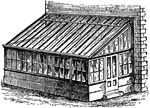
Plant House
A lean-to plant house which is associated with the growth of ornamental plant and flowers.
D Valve
"A valve for opening and closing the induction and eduction passages of a steam-engine cylinder: so…

D Valve
"A valve for opening and closing the induction and eduction passages of a steam-engine cylinder: so…










